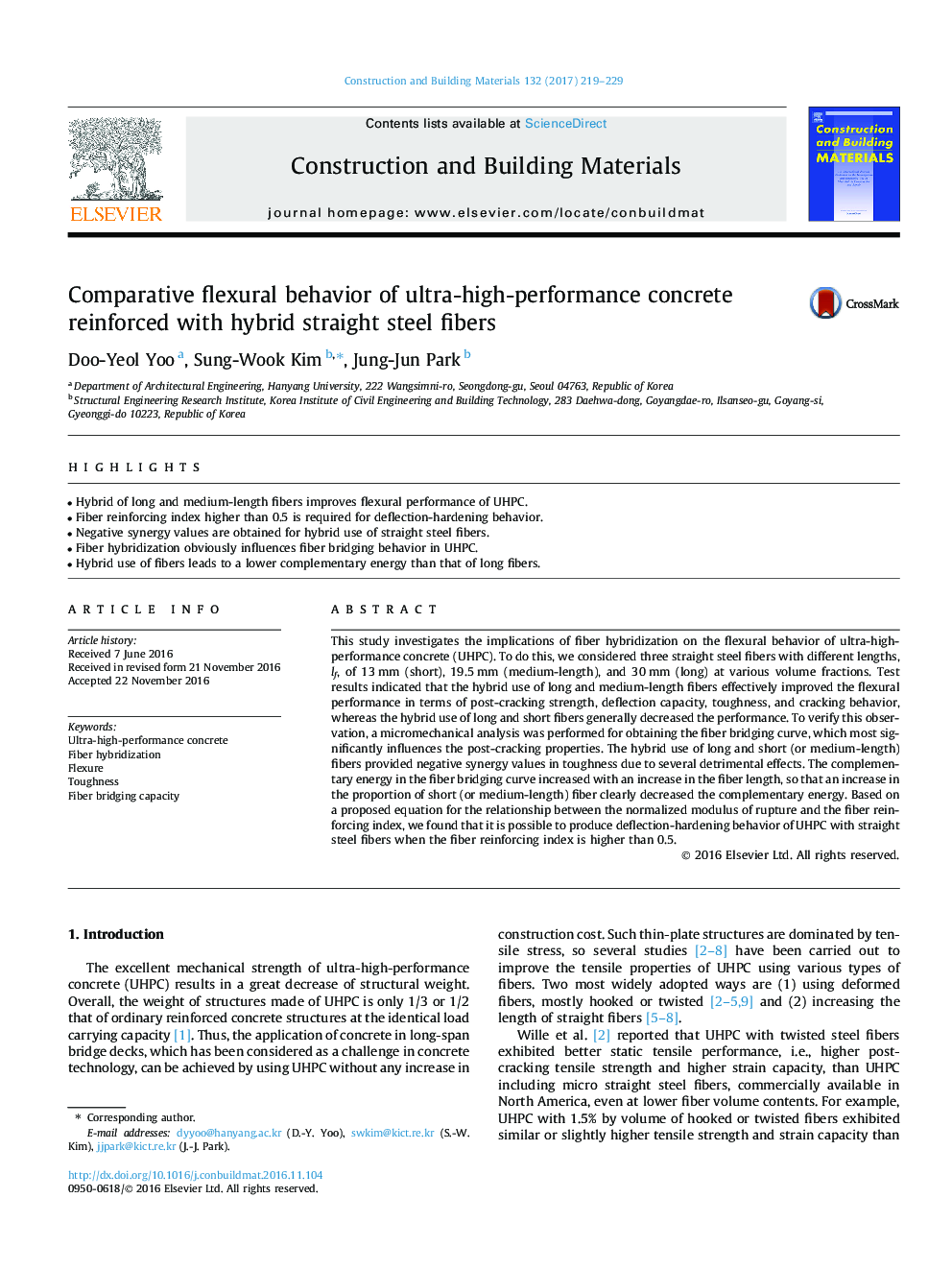| Article ID | Journal | Published Year | Pages | File Type |
|---|---|---|---|---|
| 4913826 | Construction and Building Materials | 2017 | 11 Pages |
Abstract
This study investigates the implications of fiber hybridization on the flexural behavior of ultra-high-performance concrete (UHPC). To do this, we considered three straight steel fibers with different lengths, lf, of 13Â mm (short), 19.5Â mm (medium-length), and 30Â mm (long) at various volume fractions. Test results indicated that the hybrid use of long and medium-length fibers effectively improved the flexural performance in terms of post-cracking strength, deflection capacity, toughness, and cracking behavior, whereas the hybrid use of long and short fibers generally decreased the performance. To verify this observation, a micromechanical analysis was performed for obtaining the fiber bridging curve, which most significantly influences the post-cracking properties. The hybrid use of long and short (or medium-length) fibers provided negative synergy values in toughness due to several detrimental effects. The complementary energy in the fiber bridging curve increased with an increase in the fiber length, so that an increase in the proportion of short (or medium-length) fiber clearly decreased the complementary energy. Based on a proposed equation for the relationship between the normalized modulus of rupture and the fiber reinforcing index, we found that it is possible to produce deflection-hardening behavior of UHPC with straight steel fibers when the fiber reinforcing index is higher than 0.5.
Related Topics
Physical Sciences and Engineering
Engineering
Civil and Structural Engineering
Authors
Doo-Yeol Yoo, Sung-Wook Kim, Jung-Jun Park,
